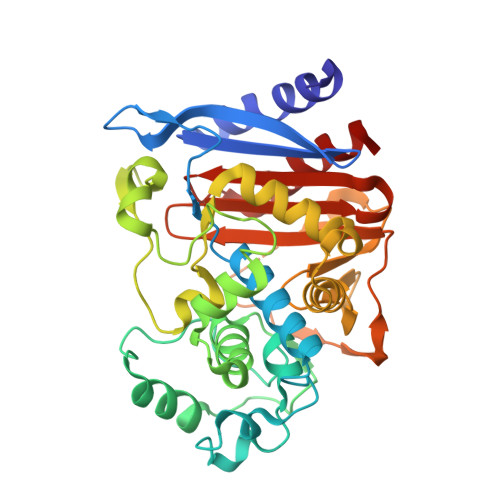Structure-based efforts to optimize a non-beta-lactam inhibitor of AmpC beta-lactamase.
Hendershot, J.M., Mishra, U.J., Smart, R.P., Schroeder, W., Powers, R.A.(2014) Bioorg Med Chem 22: 3351-3359
- PubMed: 24835785
- DOI: https://doi.org/10.1016/j.bmc.2014.04.051
- Primary Citation of Related Structures:
4JXS, 4JXV, 4JXW - PubMed Abstract:
β-Lactams are the most widely prescribed class of antibiotics, yet their efficacy is threatened by expression of β-lactamase enzymes, which hydrolyze the defining lactam ring of these antibiotics. To overcome resistance due to β-lactamases, inhibitors that do not resemble β-lactams are needed. A novel, non-β-lactam inhibitor for the class C β-lactamase AmpC (3-[(4-chloroanilino)sulfonyl]thiophene-2-carboxylic acid; Ki 26μM) was previously identified. Based on this lead, a series of compounds with the potential to interact with residues at the edge of the active site were synthesized and tested for inhibition of AmpC. The length of the carbon chain spacer was extended by 1, 2, 3, and 4 carbons between the integral thiophene ring and the benzene ring (compounds 4, 5, 6, and 7). Compounds 4 and 6 showed minimal improvement over the lead compound (Ki 18 and 19μM, respectively), and compound 5 inhibited to the same extent as the lead. The X-ray crystal structures of AmpC in complexes with compounds 4, 5, and 6 were determined. The complexes provide insight into the structural reasons for the observed inhibition, and inform future optimization efforts in this series.
Organizational Affiliation:
Cell and Molecular Biology Program, Grand Valley State University, Allendale, MI 49401, United States.
















